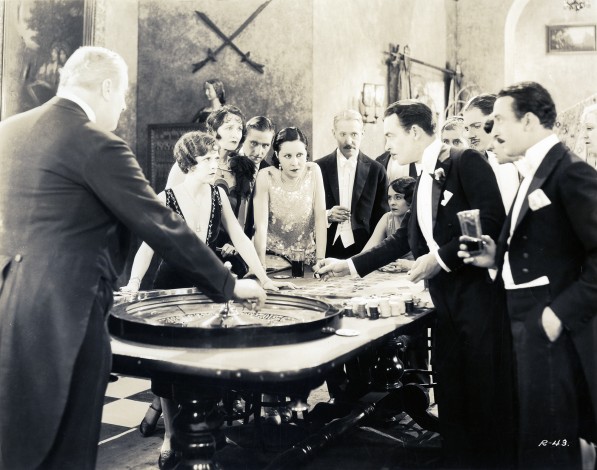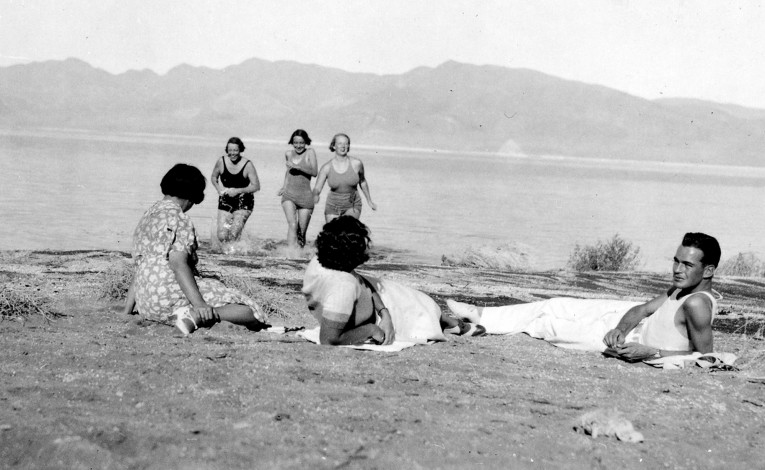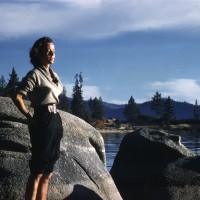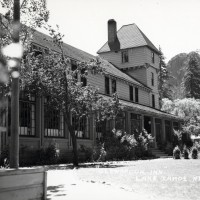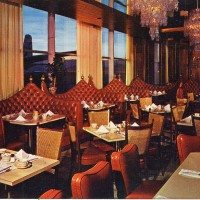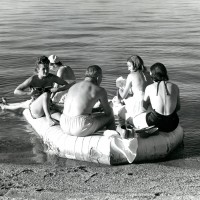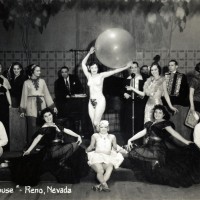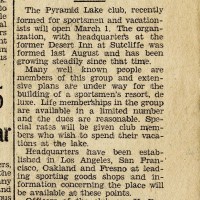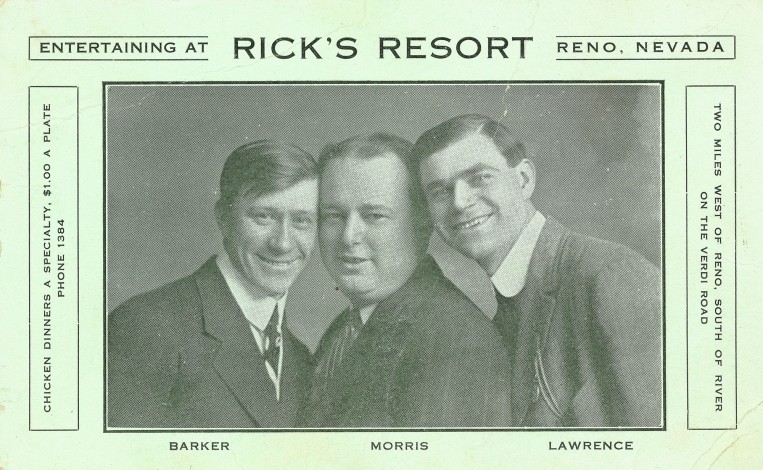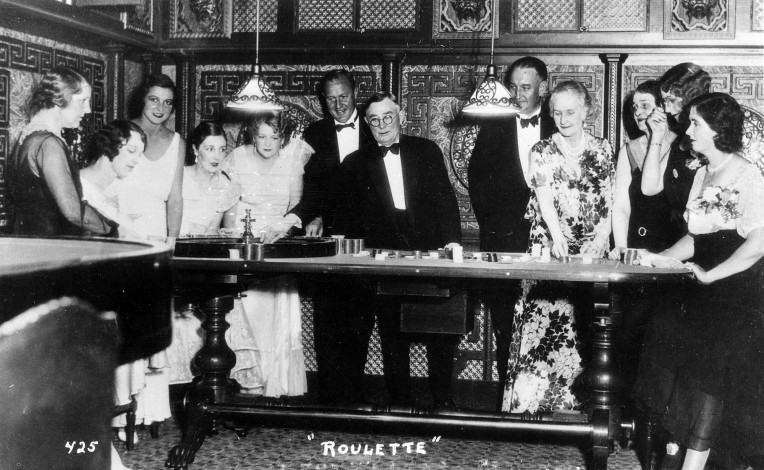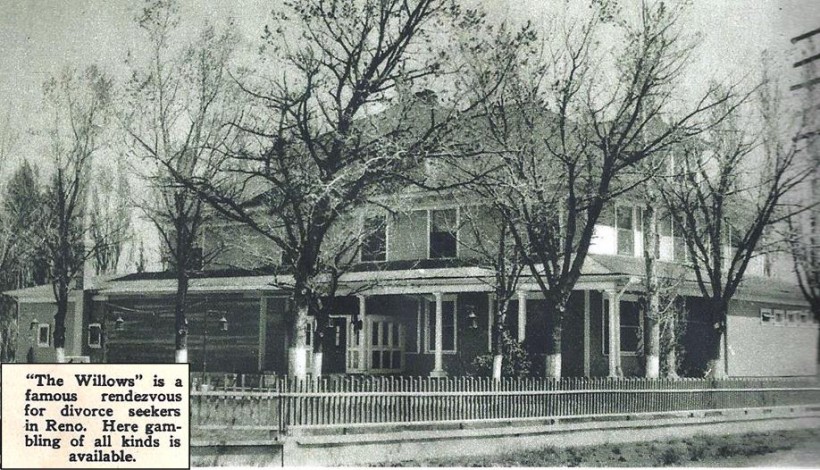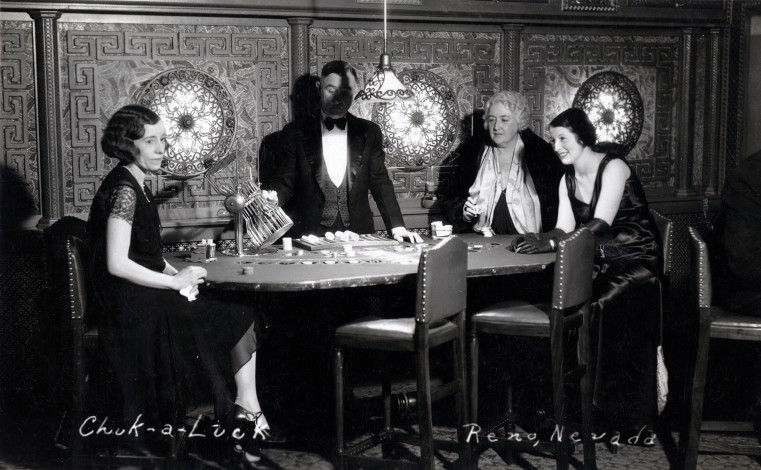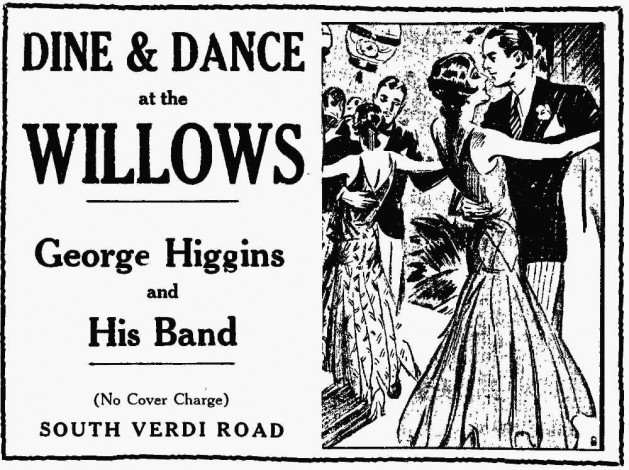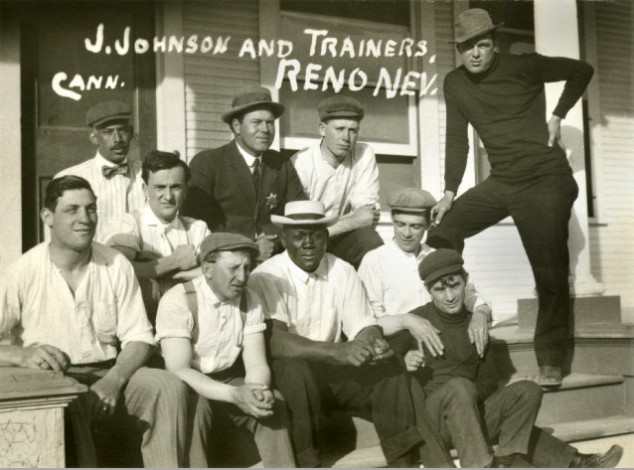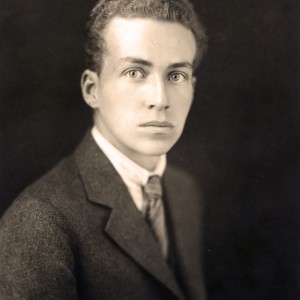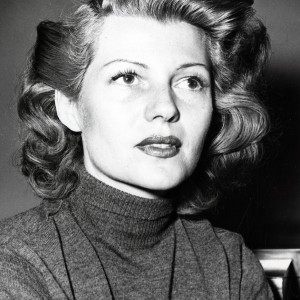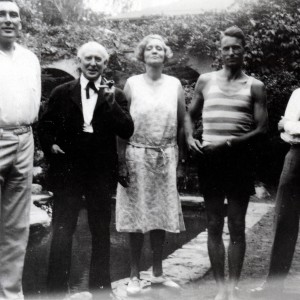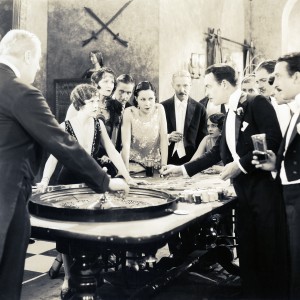Reno was not a large community when its divorce mill first began operation, and throughout the entire divorce era, it remained a compact city with one central business district. Shopping, business, and entertainment—including, after 1931, casinos—clustered in a compact downtown core.
As a result, the well-to-do generally trod the same paths as their less fortunate counterparts. Still, several establishments set themselves apart as more exclusive destinations with their expensive menus and membership requirements, or simply by capturing the imagination of the upscale customer. These included the Tavern, the Dog House, the Willows, and the short-lived Country Club.
Luxury hotels included the Riverside Hotel and Mapes Hotel, both featuring casinos, bars, restaurants, and showrooms. The Mapes’ Skyroom, high on the 12th floor with floor-to-ceiling windows, became a favorite of the elite divorce-seeker.
Many wealthy visitors were captivated by Reno’s small-town western charm, and sought out the same entertainments as the residents enjoyed, from the rodeo and racetrack to relaxing on the beaches of Lake Tahoe.
When privacy beckoned, the rich and famous found refuge at soirées thrown by local society figures, and at the more exclusive guest ranches, such the Flying ME, Washoe Pines, and the Pyramid Lake guest ranch.
Featured Resources
Rick’s Resort/The Willows
One of the most famous nightspots patronized by affluent divorce-seekers and longtime residents alike was The Willows, a swanky resort operating several miles west of Reno, on what was then called Verdi Road (now Mayberry Drive).
The exclusive getaway had its start as Rick’s Resort, founded around 1909 by Rick DeBernardi. Primarily a supper and dancing club, the resort served as training headquarters for heavyweight prizefighting champion Jack Johnson as he prepared for his July 4, 1910 bout against Jim Jeffries. After Johnson's victory, the resort went back to its role as a local getaway, known for $1.00 chicken dinners and eclectic entertainment.
The enactment of Prohibition threatened to close the resort, until it was taken over in 1922 by Bill Graham and Jim McKay, two somewhat shady characters who renamed it The Willows and undertook an expensive renovation costing approximately $160,000. When it reopened, delicate filigree work adorned the hundreds of lights inside and on the surrounding grounds. An avenue of colored lights led to the main entrance.
The Willows became the most exclusive gambling house and speakeasy in all of Nevada, gaining a national reputation for its gaiety, hospitality, beauty, and opulence. Its interior was divided into four areas: the Blue Room, the Chinese Room, the restaurant, and the dance floor. After 1931, gambling was openly conducted in the Chinese Room, which was decorated with Chinese red and blue lacquer on the walls, ceiling, and fixtures. Soft lights shimmered on gold tablecloths and upholstery and on silk draperies.
A Saturday night in the Blue Room resembled the premiere of an important motion picture. Men dressed in tuxedos and women in evening gowns would enter the room, and pianist and manager George Hart would introduce the new arrivals, describe their fashionable appearance, and sometimes their marital status. He would then take his seat at the piano and paraphrase a popular song, substituting the real names of persons for the original lyrics.
The merriment came to a sudden end on June 14, 1932 when The Willows burned to the ground in two hours while closed for remodeling. Although James McKay stated his intention to rebuild, he never did.
